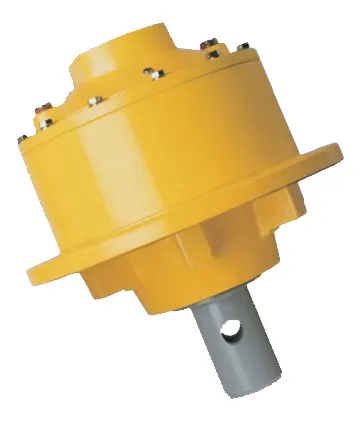Renewable energy systems, such as wind turbines and solar trackers, have become essential contributors to the global shift towards sustainable energy sources. These systems rely on efficient and reliable power transmission mechanisms to harness renewable energy. In this post, we will explore how planetary wheel drives serve as the backbone of renewable energy systems, enabling efficient energy generation.
Wind Turbine Applications
Wind turbines harness the power of the wind to generate electricity. Planetary wheel drives play a crucial role in wind turbine systems, particularly in the pitch and yaw control mechanisms. The pitch system adjusts the angle of the turbine blades to optimize energy capture, while the yaw system rotates the turbine to face the wind. Planetary wheel drives provide precise and reliable motion control, ensuring efficient blade positioning and accurate alignment with wind direction, maximizing energy output.
Solar Tracking Systems
Solar trackers enable solar panels to follow the movement of the sun throughout the day, maximizing the amount of sunlight captured and increasing energy production. Planetary wheel drives are used in solar tracking systems to precisely control the azimuth and elevation movements of the solar panels. The compact and efficient design of these drives allows for smooth and accurate tracking, ensuring optimal solar energy absorption.
Durability and Reliability
Renewable energy systems often operate in harsh environments, including high winds, extreme temperatures, and exposure to dust and moisture. Planetary wheel drives are designed to withstand these demanding conditions. They are built with robust materials and advanced sealing mechanisms to provide excellent durability and reliability. This ensures uninterrupted operation of renewable energy systems, reducing maintenance requirements and maximizing energy production.
Gearbox Efficiency
Planetary wheel drives are commonly used in the gearbox of renewable energy systems, such as wind turbines and solar trackers. The gearbox serves as a speed increaser or reducer, depending on the specific requirements of the system. Planetary wheel drives excel in gearbox applications due to their efficient power transmission capabilities, low friction losses, and high torque capacity. This results in improved overall system efficiency and optimized energy conversion.
Scalability and Adaptability
Renewable energy systems come in various sizes and configurations, from small-scale residential setups to large utility-scale installations. Planetary wheel drives offer scalability and adaptability to accommodate different power requirements. Manufacturers can customize the gear ratios, gear materials, and housing designs to meet specific energy generation needs. This flexibility allows for efficient integration of planetary wheel drives into a wide range of renewable energy systems.
Planetary wheel drives serve as the backbone of renewable energy systems, enabling efficient energy generation from wind and solar sources. Their contributions in wind turbine pitch and yaw control, solar tracking systems, gearbox efficiency, durability, and adaptability make them vital components in the renewable energy industry. As the world continues to embrace renewable energy, planetary wheel drives will play an increasingly significant role in driving sustainable power generation and reducing reliance on fossil fuels.


